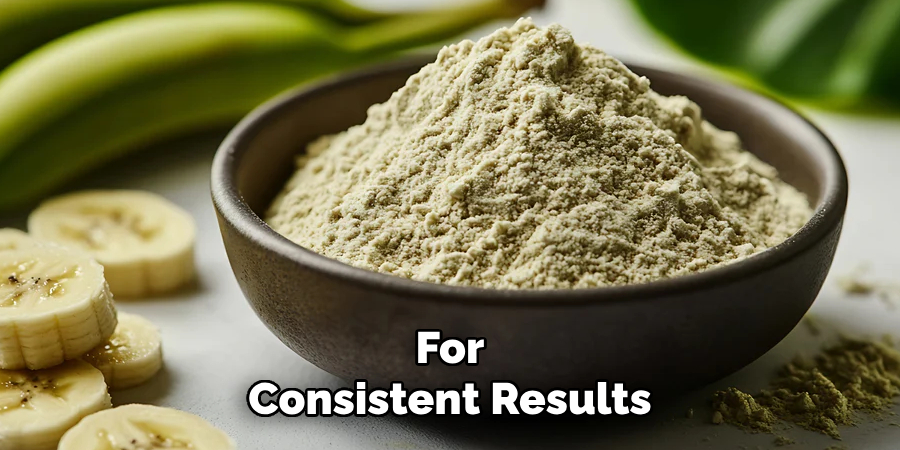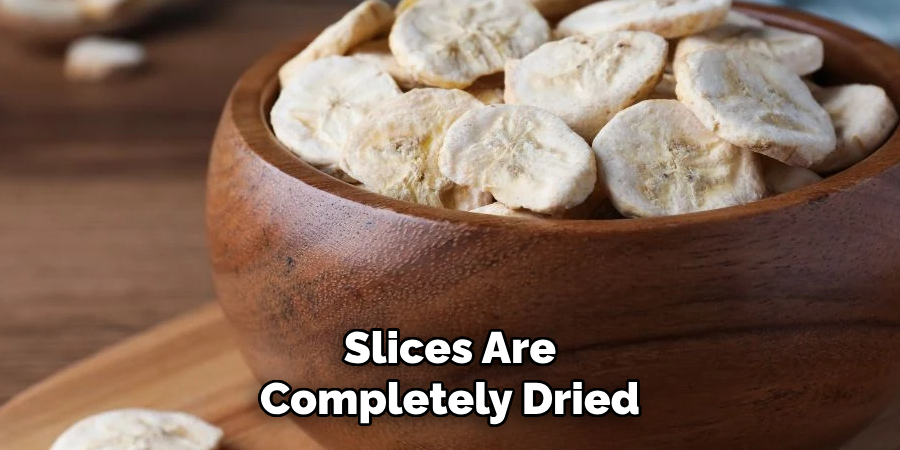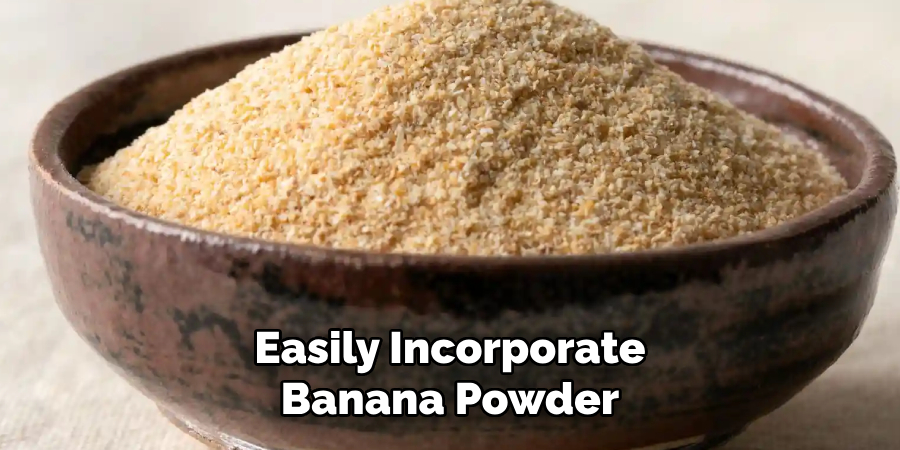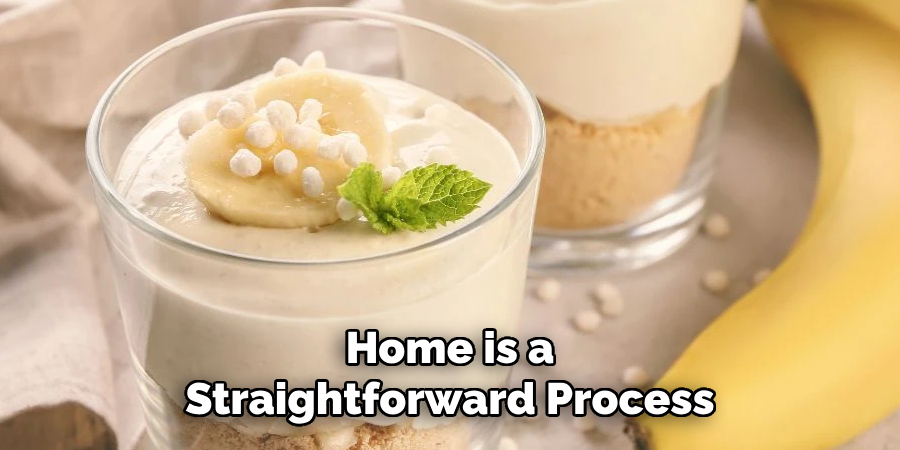Are you tired of throwing away overripe bananas? Instead of letting them go to waste, you can use them to make delicious and nutritious banana powder!
Banana powder is a versatile and nutritious ingredient in smoothies, baked goods, baby food, and more. Making banana powder at home is an excellent way to ensure its purity and freshness and reduce food waste by repurposing ripe bananas.
The process involves a few simple steps, including slicing, drying, and grinding the bananas, resulting in a finely textured powder that retains the fruit’s natural flavor and nutrients. Whether for culinary or cosmetic purposes, homemade banana powder is a convenient and cost-effective addition to your pantry.

In this guide on how to make banana powder at home, we will cover the step-by-step process and provide tips for storage and usage.
What Are the Benefits of Banana Powder?
Banana powder is rich in vitamins and minerals, making it a healthy and versatile ingredient to have on hand. Some potential benefits of banana powder include the following:
- High levels of potassium, which can help regulate blood pressure
- Good source of fiber, aiding in digestion and gut health
- Contains vitamin C, an antioxidant that may boost immunity and promote collagen production for healthy skin
- Provides carbohydrates for energy
- Natural sweetness can be used as a sugar alternative in recipes
What Will You Need?
To make banana powder at home, you will need:
- Ripe bananas
- A large baking sheet or dehydrator
- Blender or food processor
- Storage container with a tight-fitting lid
Optional ingredients for flavored banana powder:
- Cinnamon, cocoa powder, or other spices for added flavor
- Lemon juice to prevent browning and add tartness
- Honey or maple syrup for natural sweetness
Once you have gathered all these ingredients, you can begin making your own banana powder.
8 Easy Steps on How to Make Banana Powder
Step 1: Choose the Right Bananas
Selecting the right bananas is crucial to creating high-quality banana powder. Opt for ripe bananas that are firm yet soft, with a bright yellow peel and minimal brown spots. Ripe bananas ensure a naturally sweet flavor and smooth texture in the final product. Avoid overripe bananas, as they may have excessive moisture content and a stronger, almost fermented taste that can alter the powder’s quality.
Similarly, underripe bananas with green peels may taste bitter or bland. If you wish to create a sweeter powder, choose bananas that are slightly riper but still manageable for slicing. Remember, the quality of your powder largely depends on the starting ingredients, so take your time to select the best bananas for this process.
Step 2: Preparing the Bananas
Once you have selected your bananas, the next step is to prepare them properly to ensure the highest quality for your banana powder. Start by washing the bananas thoroughly under running water to remove any dirt or residual pesticides. After washing, peel the bananas carefully, ensuring no bits of peel remain, as they can negatively impact the texture and flavor of the powder.
For consistent results, slice the bananas into evenly sized pieces, approximately ¼ inch thick. Uniform slices dry more evenly during the dehydration process and reduce the risk of uneven textures in the resulting powder. If you aim for a finer texture, consider slicing the bananas thinner.

Additionally, you can soak the slices in a diluted lemon juice solution for a few minutes to prevent browning during drying. This step is optional but can improve the visual appeal of your powder. With your bananas adequately prepared, you can move on to the drying phase.
Step 3: Drying the Banana Slices
Arrange the banana slices in a single layer on the dehydrator trays, ensuring no overlap to allow proper airflow. Set the dehydrator to a temperature of 135°F (57°C), ideal for drying fruits. The drying process typically takes 8–12 hours, depending on the thickness of the banana slices and the humidity levels in your environment.
Check the slices periodically to ensure they are drying evenly, and rotate the trays if necessary. The bananas are ready when they feel completely dry and break crisply without moisture. Properly dried slices are essential for achieving a fine, stable banana powder.
Step 4: Grinding the Dried Bananas
Once the banana slices are completely dried, transfer them to a blender, food processor, or coffee grinder. Gradually blend the dried slices into a fine powder, working in batches if needed to avoid overloading your equipment. Be sure to pulse the grinder for short intervals to achieve a uniform texture and prevent overheating, which can alter the quality of the powder.
Use a fine mesh sieve to sift the banana powder, returning any larger pieces to the grinder for further blending. Proper grinding ensures a smooth, consistent powder suitable for various applications.
Step 5: Store the Banana Powder
Once you have achieved a fine and consistent powder, transfer it to an airtight container for storage. Ensure the storage container is clean, dry, and preferably made of glass or food-grade plastic to preserve the powder’s quality. Store the container in a cool, dark, and dry place, such as a pantry or cupboard, to prevent moisture or sunlight from affecting the powder. Proper storage will help extend the shelf life and maintain your homemade banana powder’s flavor and nutritional value.
Step 6: Use Dry Banana Powder in Recipes
Homemade banana powder makeup can be versatile in various recipes, adding natural sweetness, flavor, and nutrients. Mix it into smoothies or shakes for a quick energy boost, or use it as a natural sweetener in oatmeal, yogurt, or cereal. It also serves as an excellent addition to baked goods such as muffins, pancakes, or cookies, where it enhances the flavor and boosts the potassium content.

For infants or toddlers, banana powder can be rehydrated with warm water or milk to create a smooth, nutritious puree. Additionally, it works well as a natural flavoring in ice creams, puddings, or desserts. Experiment with different recipes to take full advantage of the versatility of banana powder in your kitchen.
Step 7: Add Flavor to Your Smoothies
Banana powder is an excellent addition to smoothies, transforming them into a more filling and nutrient-rich beverage. Its natural sweetness complements a wide range of fruits, such as berries, mangoes, or pineapples, and can even balance the flavors of greens like spinach or kale.
Simply add a tablespoon or two of banana powder to your smoothie mixture for a quick energy boost, as it is packed with essential vitamins like B6 and C and minerals such as potassium and magnesium. The powder also creates a creamy consistency, making your smoothie velvety and enjoyable without additional thickeners like yogurt or oats. Experimenting with different combinations allows you to create a variety of delicious and healthy blends, perfect for breakfast, a post-workout treat, or a refreshing snack.
Step 8: Incorporate into Savory Dishes
Banana powder isn’t just limited to sweet recipes; it can be a surprisingly versatile addition to savory dishes. Its natural sweetness and subtle flavor can balance spicy or tangy ingredients, creating a harmonious fusion of tastes. For example, you can add a small amount of banana powder to soups or stews to enhance their richness without overpowering other flavors.
It can also be used in marinades to tenderize meats, as the enzymes in bananas are known for breaking down proteins. Incorporating banana powder into curry sauces or dips adds a hint of sweetness that complements bold, spicy notes. Don’t hesitate to explore how this unique ingredient can elevate your savory creations in unexpected and delicious ways.
By following these tips, you can easily incorporate banana powder into your daily cooking and add some variety to your meals.

5 Things You Should Avoid
- Using Overripe Bananas
While ripe bananas are ideal for eating, overripe bananas may not be suitable for making banana powder. They can be too sticky and retain too much moisture, leading to clumping and reducing the powder’s shelf life.
- Skipping Proper Drying
Thoroughly drying the banana slices is crucial. If the slices are not entirely dehydrated, the residual moisture can cause the powder to spoil quickly or develop mold.
- Using High Heat to Speed Up Drying
Avoid using excessive heat when drying bananas, as this can scorch or caramelize the slices, affecting the flavor and resulting in an uneven texture in the final powder.
- Not Storing Properly
Once the powder is made, storing it in an airtight container away from moisture, heat, and light is essential. Improper storage can result in the powder losing its flavor and nutritional value over time.
- Using Dirty or Wet Equipment
Always ensure that the equipment used for slicing, drying, and grinding bananas is clean and dry. Contamination or residual moisture from the tools can compromise the quality and safety of your banana powder.

Conclusion
Making banana powder at home is a straightforward process that requires attention to detail and proper care at every step.
You can produce a high-quality, nutrient-rich powder by selecting ripe bananas, thoroughly cleaning and drying the equipment, and ensuring optimal drying conditions. Proper storage is equally important to preserve the powder’s flavor and benefits. With these steps in mind, you can create a versatile ingredient that adds natural sweetness and nutrition to various recipes.
Hopefully, the article on how to make banana powder has given you a better understanding of the process and its benefits.
About the Author
Jane Hubbard is a passionate beauty expert with a wealth of experience in makeup, hair, and overall beauty techniques. After years of working as a hairdresser specialist, she followed her entrepreneurial spirit and started her own consultancy business.
Jane has always been driven by her desire to help others feel confident in their own skin, and she does this by sharing her knowledge, experiences, and practical beauty tips. Through her consultancy, she empowers individuals to embrace their unique beauty, offering tailored guidance that boosts both self-esteem and personal style.
Professional Focus
- Specializes in makeup, hairstyling, and beauty consulting.
- Provides personalized beauty advice, tips, and techniques to help individuals feel confident in their appearance.
- Dedicated to staying up-to-date with the latest industry trends and developments.
- Passionate about creating a comfortable and empowering experience for every client.
Education History
- University of Craft and Design – Bachelor of Fine Arts (BFA) in Woodworking and Furniture Design
- Woodworking Apprenticeships – Extensive hands-on training with skilled craftsmen to refine carpentry and furniture making techniques
- Online Courses & Masterclasses – Continued education in advanced woodworking techniques, design principles, and specialized tools
Expertise:
- Makeup artistry, hairstyling, and beauty consulting.
- Personalized beauty techniques to enhance confidence and self-expression.
- Educating clients on how to maintain their beauty routines at home.
